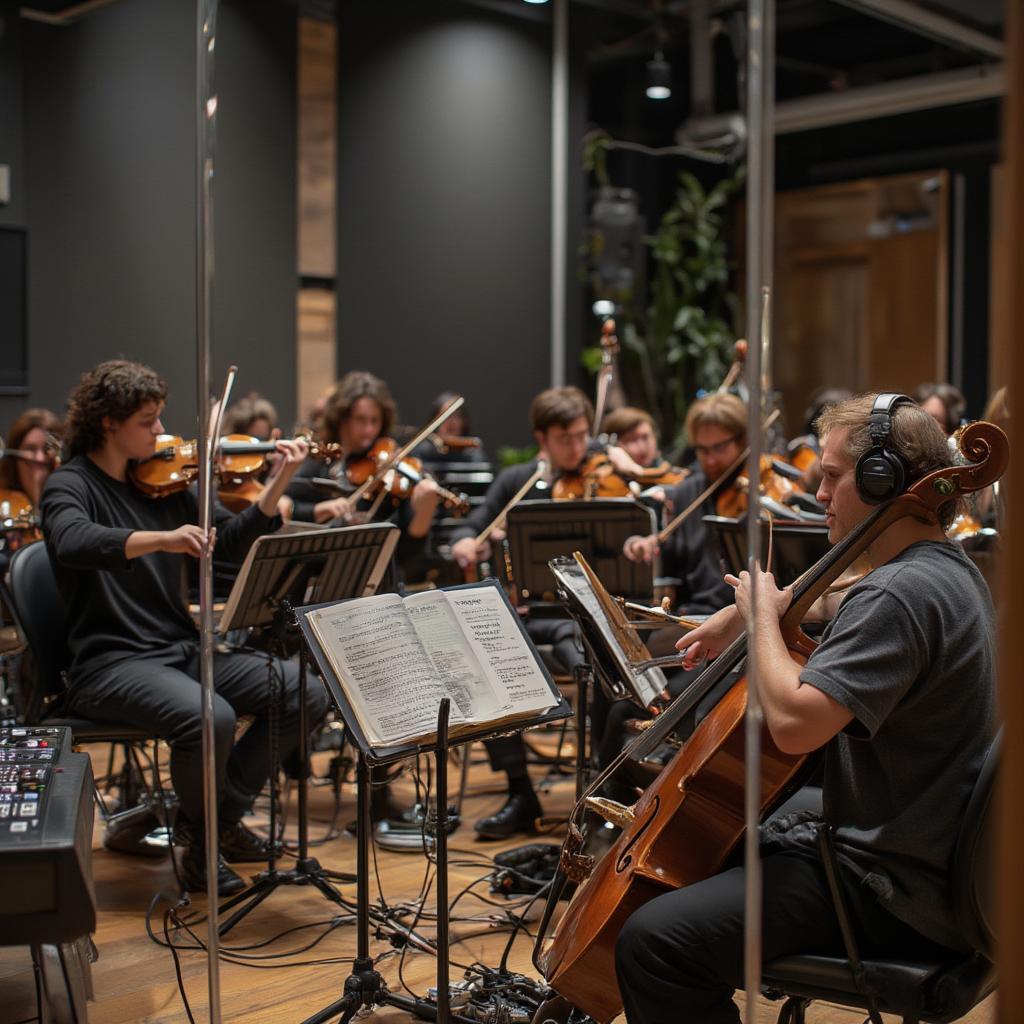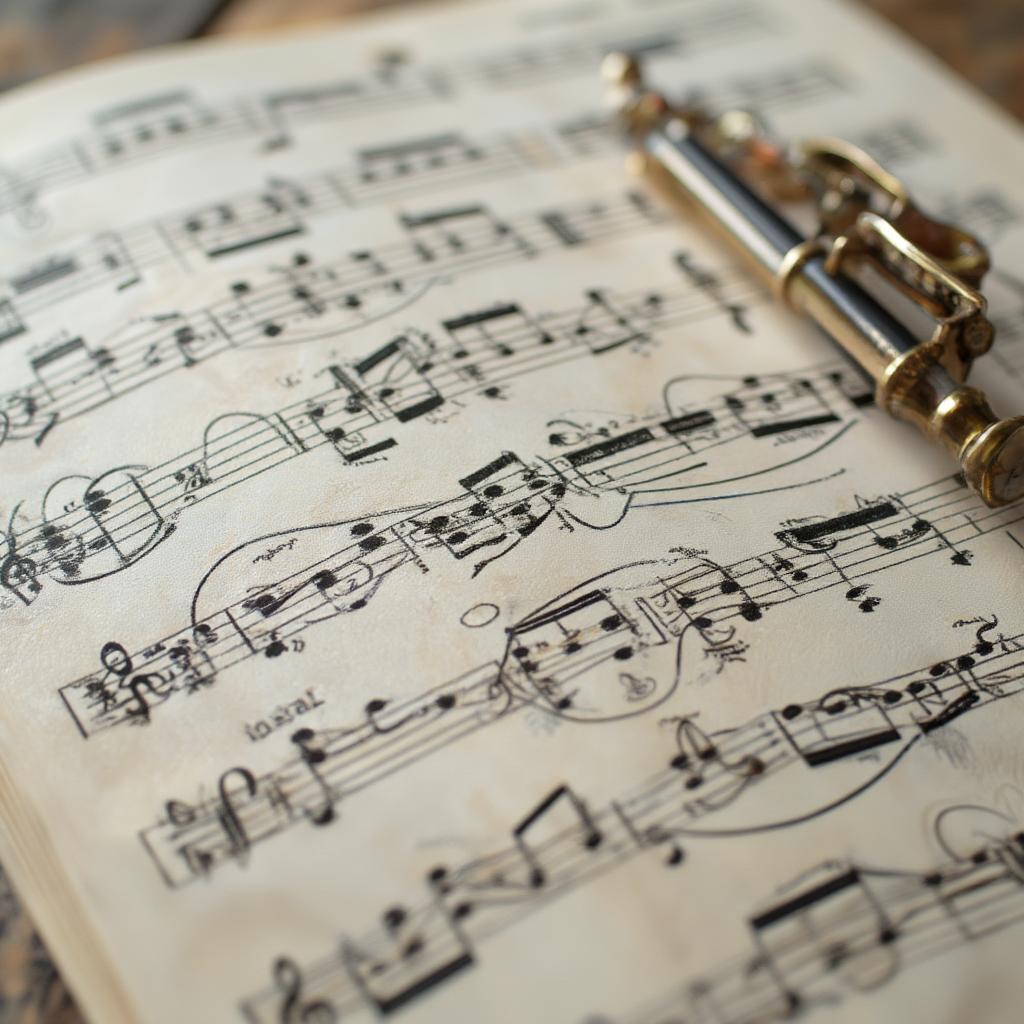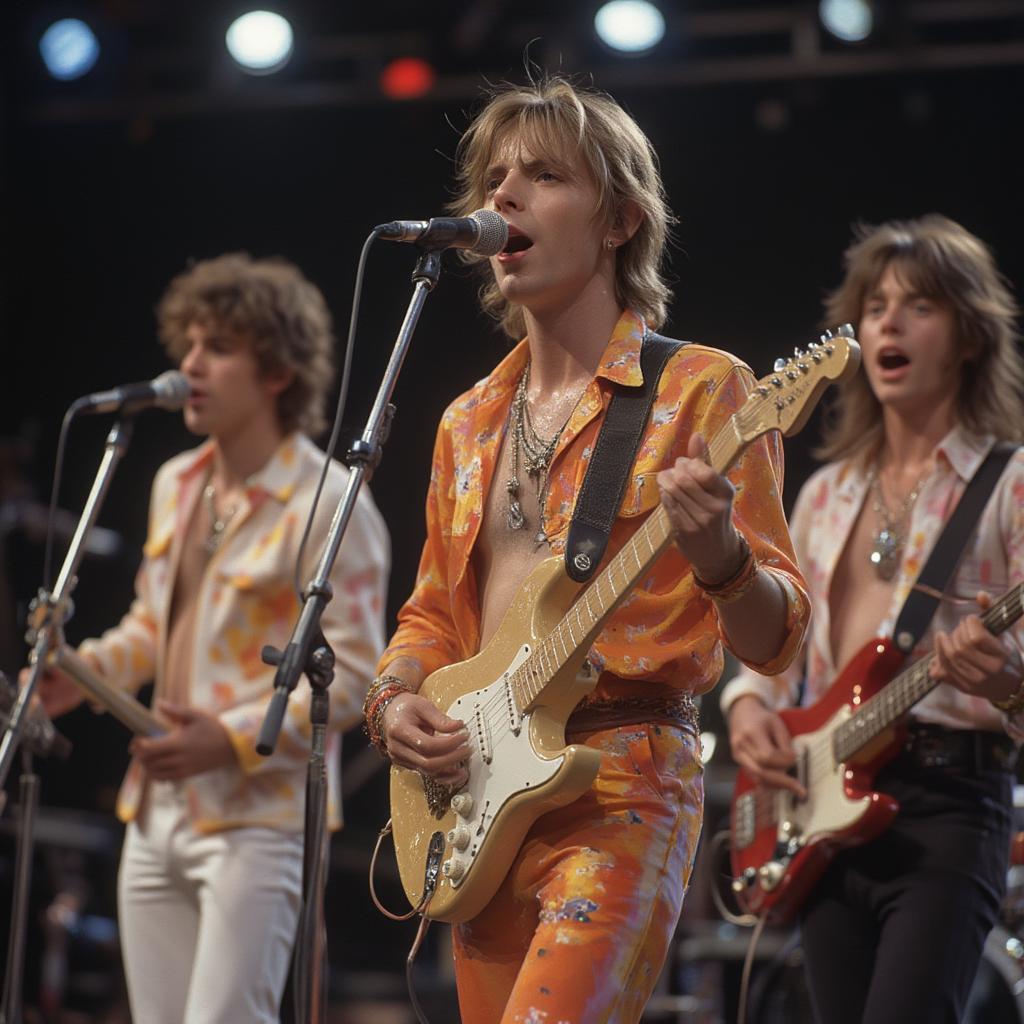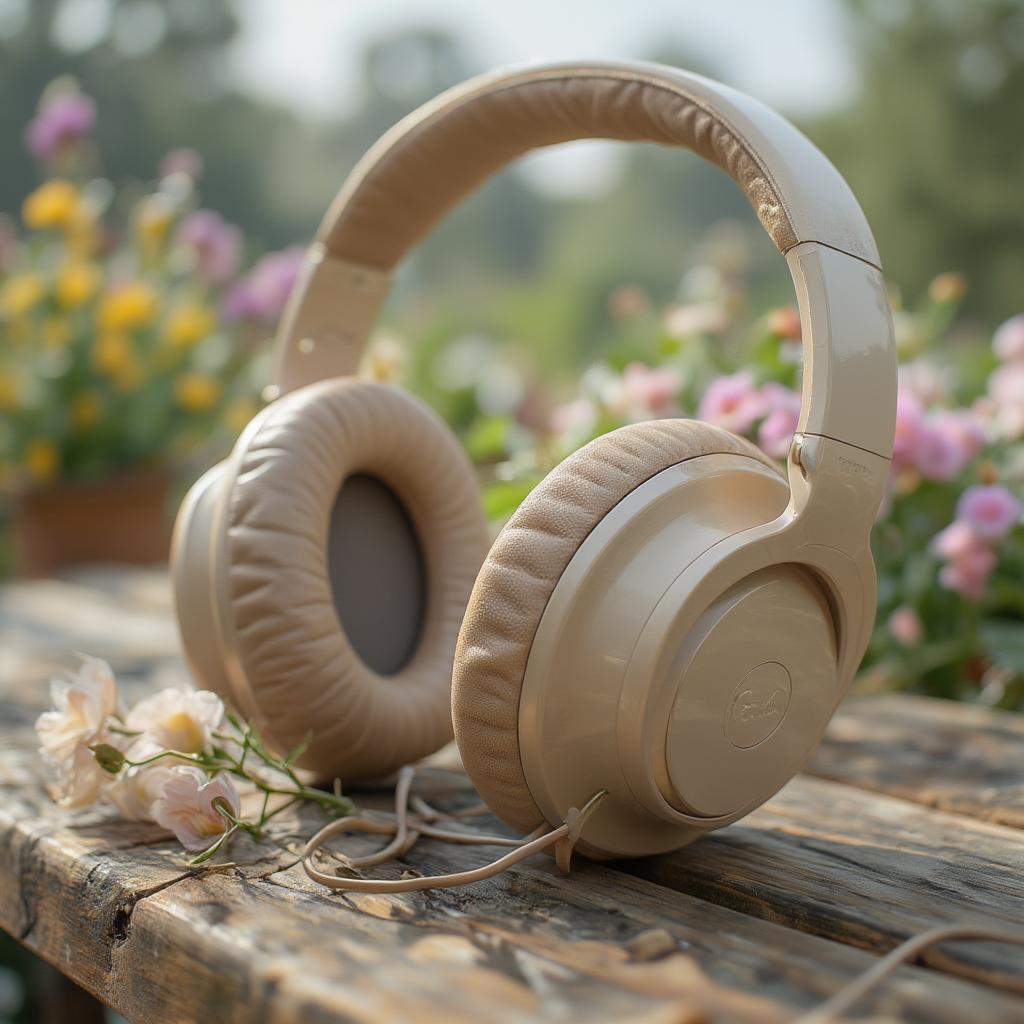Orchestral Pop: The Bold Fusion Taking Over Modern Music

Orchestral Pop, a captivating genre blending the grandeur of classical arrangements with the infectious energy of pop music, is rapidly gaining momentum. This sonic marriage offers a refreshing alternative to traditional pop, injecting depth and emotional resonance into familiar melodies. Let’s delve into the heart of this fascinating sound and explore what makes it so compelling.
What Exactly is Orchestral Pop?
At its core, orchestral pop marries the structural elements of contemporary pop music—catchy hooks, relatable lyrics, and driving beats—with the rich textures and expansive instrumentation of a symphony orchestra. Imagine your favorite pop song, but layered with soaring strings, dramatic brass, and delicate woodwinds. This isn’t just a pop song with some added strings; it’s a cohesive blend where both elements enhance the other, creating something truly unique. The result is a sound that is both accessible and sophisticated, appealing to a wide audience.
Key Ingredients of the Orchestral Pop Recipe
Several elements contribute to the distinctive sound of orchestral pop:
- Melodic Pop Sensibilities: The foundation remains firmly in the realm of pop music, with memorable melodies and strong vocal performances.
- Orchestral Arrangements: This is where the magic happens. Skilled arrangers weave orchestral elements into the song, enhancing its emotional impact and adding layers of complexity.
- Dynamic Contrasts: Orchestral pop often utilizes dynamic contrasts to great effect, moving from delicate intimacy to powerful crescendos. This creates a sense of drama and engagement.
- Modern Production: Despite the presence of traditional instruments, orchestral pop still benefits from modern production techniques, creating a polished and contemporary sound.
- Eclectic Influences: Artists often draw inspiration from various genres, such as film scores, electronic music, and world music, further enriching the soundscape.
The Allure of Orchestral Pop: Why Is It Trending?
So, why is orchestral pop gaining such traction? Several factors contribute to its growing popularity:
- Emotional Depth: The use of orchestral instruments adds an emotional weight that is often lacking in purely electronic pop music. The sweeping strings and powerful brass can evoke a wide range of feelings, from joy and exhilaration to melancholy and introspection.
- Sophistication and Artistry: Orchestral arrangements elevate the perceived artistry of a pop song, lending it a touch of sophistication and class. This can appeal to those seeking music with more substance.
- Nostalgia and Innovation: The genre blends the familiar sounds of pop with the nostalgic resonance of classical music, creating something both comforting and innovative.
- Film and Television Influence: The popularity of film scores, which often utilize orchestral arrangements, has contributed to a growing appreciation for this type of sound. Many people have a subconscious familiarity with the emotional power of orchestral music.
- A Desire for Authenticity: In a world saturated with electronic music, some listeners crave the organic sounds of real instruments, adding to the growing appeal of orchestral pop.
“The beauty of orchestral pop lies in its ability to connect with listeners on a deeper level,” states renowned music arranger, Dr. Anya Petrova. “It’s not just about catchy tunes; it’s about creating sonic landscapes that resonate with the human experience.”
How to Identify and Appreciate Orchestral Pop
Identifying orchestral pop can be quite straightforward; however, understanding its nuances will enhance your appreciation:
- Listen for the Orchestra: The most obvious giveaway is the presence of traditional orchestral instruments such as strings, brass, woodwinds, and percussion.
- Notice the Dynamic Range: Pay attention to the contrasts between quiet and loud sections, often created by the orchestral arrangement.
- Feel the Emotional Intensity: The use of orchestral elements will likely evoke a greater emotional response than traditional pop.
- Appreciate the Complexity: Orchestral arrangements can add layers of complexity to a pop song, creating a richer listening experience.
- Explore Different Artists: There is a diverse range of artists creating orchestral pop, each with their unique take on the genre.
Orchestral Pop: Shaping the Future of Music for Shock Naue
As a musician and producer for Shock Naue, my goal is to shape a sound that resonates with our audience – one that is fresh, energetic, and emotionally captivating. Orchestral pop is a perfect avenue to do just that. By infusing our pop sensibilities with the grandiosity of orchestral music, we are forging a distinct identity that is both contemporary and timeless. We aim to create music that moves not only the body, but also the soul. We aren’t just making music; we are building an experience.

Embracing the “Shock Naue” Ethos Through Orchestral Pop
At Shock Naue, we embrace the unconventional. Orchestral pop allows us to push creative boundaries, blending high-art forms with modern pop sensibilities. This allows us to create a unique brand identity that appeals to an audience that craves something different, something memorable, something, well… shocking. Here’s how we’re integrating the genre:
- Original Compositions: We are creating original music with meticulously crafted orchestral arrangements tailored to the Shock Naue brand.
- Collaborative Projects: We are collaborating with talented orchestral arrangers and musicians to deliver an authentic orchestral sound.
- Live Performances: We will incorporate live orchestral elements into our performances, creating a memorable concert experience for our fans.
- Digital Content: We will produce visually stunning music videos and engaging content that showcases the unique sound of orchestral pop.
- Experimentation: We are continually experimenting with new and innovative ways to blend orchestral and pop elements, pushing the boundaries of the genre.
“Shock Naue isn’t just following trends; we are creating them,” comments industry veteran and Shock Naue mentor, Mr. Kenji Tanaka. “By embracing orchestral pop, they are positioning themselves as innovators in the music scene.”
The Importance of Orchestral Pop: A Fresh Perspective
Orchestral pop is not just another musical trend; it’s a significant shift in how we perceive and consume pop music. It’s a genre that reintroduces the power of human performance and the emotional depth of acoustic instruments. It is a fusion that has the ability to reach a broader audience, connecting those who may not usually listen to classical music. This fusion is a beautiful demonstration of how different elements can complement each other, creating a more immersive and emotionally charged sound.

The Future of Orchestral Pop
The future of orchestral pop looks exceptionally bright. As more artists embrace this genre, we are sure to witness greater innovation and further refinement. Here are a few anticipated trends:
- Hybrid Subgenres: Expect to see new hybrid subgenres emerging, blending orchestral pop with elements of electronica, R&B, and other genres.
- Increased Collaboration: Collaboration between pop artists and orchestral composers will become more common, leading to exciting new sounds.
- Global Influences: The incorporation of world music influences will create diverse and globally resonant orchestral pop.
- Technological Advancement: Advancements in music technology will enhance the ways orchestral elements are integrated into digital production, creating new sonic possibilities.
- Growing Fanbase: With the continued evolution and adoption of the genre, orchestral pop is expected to develop a large and diverse fan base.
Conclusion: Orchestral Pop is Here to Stay
Orchestral pop is more than just a passing trend, it is a powerful musical fusion that has the potential to shape the future of contemporary music. Its blend of pop sensibilities and orchestral arrangements delivers a sound that is both accessible and sophisticated, appealing to a broad audience. By embracing orchestral pop, Shock Naue is positioning itself at the forefront of musical innovation, creating a fresh, engaging and emotional experience for our listeners. This genre is not just a fad, but a solid and promising movement that is here to stay, and we at Shock Naue are excited to be a part of this exciting musical evolution.
FAQ about Orchestral Pop
Here are some frequently asked questions about orchestral pop:
1. What is the main difference between orchestral pop and regular pop music?
The key difference lies in the incorporation of a full or partial symphony orchestra. Regular pop music primarily uses synths, electronic sounds, and basic band instruments. Orchestral pop blends those standard pop elements with strings, brass, woodwinds, and percussion, providing a more expansive and emotional sound.
2. Can any pop song be turned into orchestral pop?
Yes, theoretically any pop song can be adapted into orchestral pop. However, the success of the adaptation lies in the arrangement and how seamlessly the orchestral elements integrate with the existing melody and rhythm. It requires skill to blend them effectively.
3. Is orchestral pop a new genre?
While the concept of blending classical and pop elements isn’t entirely new, the modern iteration of orchestral pop, with its polished production and integration of contemporary pop trends, is a relatively recent development, gaining significant popularity over the last few years.
4. Who are some prominent artists working within the orchestral pop genre?
Many artists dabble in this genre, but some more prominent figures include Lana Del Rey, Florence + The Machine, and some songs by Lorde and The Beatles showcased elements of this style. However, various artists in indie and alternative pop also venture into orchestral elements.
5. What instruments are typically featured in orchestral pop?
The most common orchestral instruments are the string section (violins, violas, cellos, basses), the brass section (trumpets, trombones, French horns), and the woodwind section (flutes, clarinets, oboes, bassoons). Percussion is also included, along with piano and harp.
6. Is it expensive to produce orchestral pop?
Producing orchestral pop can be expensive, especially when hiring a full orchestra. However, modern technology allows for high-quality orchestral sounds using virtual instruments, enabling cost-effective creation. Skilled mixing and mastering are essential, however, to get the professional sound.
7. What should listeners focus on when listening to orchestral pop?
Listeners should pay attention to how the orchestral elements enhance the emotional impact of the song. Focus on the dynamic range, the interplay between the pop elements and the orchestral arrangement, and the overall sense of sophistication and artistry.



